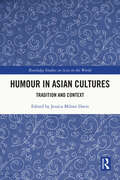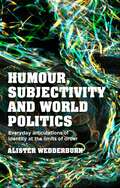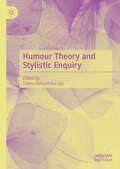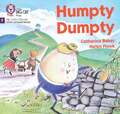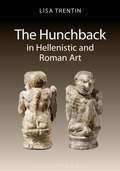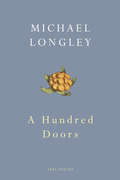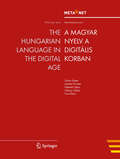- Table View
- List View
Humour in Asian Cultures: Tradition and Context (Routledge Studies on Asia in the World)
by Jessica Milner DavisThis innovative book traces the impact of tradition on modern humour across several Asian countries and their cultures. Using examples from Japan, Korea, Indonesia and Chinese cultures in Mainland China, Hong Kong and Taiwan, the contributors explore the different cultural rules for creating and sharing humour. Humour can be a powerful lubricant when correctly interpreted; mis-interpreted, it is likely to cause considerable setbacks. Over time, it has emerged and submerged in different periods and different forms in all these countries but today’s conventions still reflect traditional attitudes to and assumptions about what is appropriate in creating and using humour. Under close examination, Milner Davis and her colleagues show how forms and conventions that differ from those in the west can also be seen to possess elements in common. With examples including Mencian and other classical texts, Balinese traditional verbal humour, Korean and Taiwanese workplace humour, Japanese laughter ceremonies, performances and cartoons, as well as contemporary Chinese-language films and videos, they engage with a wide range of forms and traditions. This fascinating collection of studies will be of great interest to students and scholars of many Asian cultures, and also to those with a broader interest in humour studies. It highlights the increasing importance of understanding a wider range of cultural values in the present era of globalized communication and the importance of reliable studies of why and how cultures that are geographically related differ in their traditional uses of and assumptions about humour.
Humour in Asian Cultures: Tradition and Context (Routledge Studies on Asia in the World)
by Jessica Milner DavisThis innovative book traces the impact of tradition on modern humour across several Asian countries and their cultures. Using examples from Japan, Korea, Indonesia and Chinese cultures in Mainland China, Hong Kong and Taiwan, the contributors explore the different cultural rules for creating and sharing humour. Humour can be a powerful lubricant when correctly interpreted; mis-interpreted, it is likely to cause considerable setbacks. Over time, it has emerged and submerged in different periods and different forms in all these countries but today’s conventions still reflect traditional attitudes to and assumptions about what is appropriate in creating and using humour. Under close examination, Milner Davis and her colleagues show how forms and conventions that differ from those in the west can also be seen to possess elements in common. With examples including Mencian and other classical texts, Balinese traditional verbal humour, Korean and Taiwanese workplace humour, Japanese laughter ceremonies, performances and cartoons, as well as contemporary Chinese-language films and videos, they engage with a wide range of forms and traditions. This fascinating collection of studies will be of great interest to students and scholars of many Asian cultures, and also to those with a broader interest in humour studies. It highlights the increasing importance of understanding a wider range of cultural values in the present era of globalized communication and the importance of reliable studies of why and how cultures that are geographically related differ in their traditional uses of and assumptions about humour.
Humour in Audiovisual Translation: Theories and Applications (Routledge Advances in Translation and Interpreting Studies)
by Margherita DoreThis book offers a comprehensive account of the audiovisual translation (AVT) of humour, bringing together insights from translation studies and humour studies to outline the key theories underpinning this growing area of study and their applications to case studies from television and film. The volume outlines the ways in which the myriad linguistic manifestations and functions of humour make it difficult for scholars to provide a unified definition for it, an issue made more complex in the transfer of humour to audiovisual works and their translations as well as their ongoing changes in technology. Dore brings together relevant theories from both translation studies and humour studies toward advancing research in both disciplines. Each chapter explores a key dimension of humour as it unfolds in AVT, offering brief theoretical discussions of wordplay, culture-specific references, and captioning in AVT as applied to case studies from Modern Family. A dedicated chapter to audio description, which allows the visually impaired or blind to assess a film’s non-verbal content, using examples from the 2017 film the Big Sick, outlines existing research to date on this under-explored line of research and opens avenues for future study within the audiovisual translation of humour. This book is key reading for students and scholars in translation studies and humour studies.
Humour in Audiovisual Translation: Theories and Applications (Routledge Advances in Translation and Interpreting Studies)
by Margherita DoreThis book offers a comprehensive account of the audiovisual translation (AVT) of humour, bringing together insights from translation studies and humour studies to outline the key theories underpinning this growing area of study and their applications to case studies from television and film. The volume outlines the ways in which the myriad linguistic manifestations and functions of humour make it difficult for scholars to provide a unified definition for it, an issue made more complex in the transfer of humour to audiovisual works and their translations as well as their ongoing changes in technology. Dore brings together relevant theories from both translation studies and humour studies toward advancing research in both disciplines. Each chapter explores a key dimension of humour as it unfolds in AVT, offering brief theoretical discussions of wordplay, culture-specific references, and captioning in AVT as applied to case studies from Modern Family. A dedicated chapter to audio description, which allows the visually impaired or blind to assess a film’s non-verbal content, using examples from the 2017 film the Big Sick, outlines existing research to date on this under-explored line of research and opens avenues for future study within the audiovisual translation of humour. This book is key reading for students and scholars in translation studies and humour studies.
Humour in British First World War Literature: Taming the Great War
by Emily AndersonThis book explores how humorous depictions of the Great War helped to familiarise, domesticate and tame the conflict. In contrast to the well-known First World War literature that focuses on extraordinary emotional disruption and the extremes of war, this study shows other writers used humour to create a gentle, mild amusement, drawing on familiar, popular genres and forms used before 1914. Emily Anderson argues that this humorous literature helped to transform the war into quotidian experience. Based on little-known primary material uncovered through detailed archival research, the book focuses on works that, while written by celebrated authors, tend not to be placed in the canon of Great War literature. Each chapter examines key examples of literary texts, ranging from short stories and poetry, to theatre and periodicals. In doing so, the book investigates the complex political and social significance of this tame style of humour.
Humour in Iran: Eleven-hundred Years of Satire and Humour in Persian Literature
by Homa KatouzianSatire, irony and humour have long been features of Persian literature's rich tradition, taking various forms from the coarse and obscene to the subtle and refined. Humour in Iran is a close and comprehensive study of satire and humour – in verse as well as prose – over the eleven-hundred years since the emergence of classical Persian literature. Combining Persian original texts with their English translations, it covers a range of texts and authors, from the lampoon in Ferdowsi's great epic of the ancient kings in the tenth century, through such master satirists as Obeyd Zakani, Sa'di, Rumi, Khayyam, Hafiz, Anvari, Sana'i, Khaqani, Suzani, Qa'ani, Yaghma, and so on. The book also includes twentieth century authors such as Iraj, Dehkhoda, Bahar, Eshqi, Aref, Hedayat, Jamalzadeh, Al-e Ahmad and more. A must read for scholars and students of humour and satire as well as Persian literature and Middle Eastern studies, and it will also appeal to general readers interested in ribald humour and satire.
Humour in Iran: Eleven-hundred Years of Satire and Humour in Persian Literature
by Homa KatouzianSatire, irony and humour have long been features of Persian literature's rich tradition, taking various forms from the coarse and obscene to the subtle and refined. Humour in Iran is a close and comprehensive study of satire and humour – in verse as well as prose – over the eleven-hundred years since the emergence of classical Persian literature. Combining Persian original texts with their English translations, it covers a range of texts and authors, from the lampoon in Ferdowsi's great epic of the ancient kings in the tenth century, through such master satirists as Obeyd Zakani, Sa'di, Rumi, Khayyam, Hafiz, Anvari, Sana'i, Khaqani, Suzani, Qa'ani, Yaghma, and so on. The book also includes twentieth century authors such as Iraj, Dehkhoda, Bahar, Eshqi, Aref, Hedayat, Jamalzadeh, Al-e Ahmad and more. A must read for scholars and students of humour and satire as well as Persian literature and Middle Eastern studies, and it will also appeal to general readers interested in ribald humour and satire.
Humour, subjectivity and world politics: Everyday articulations of identity at the limits of order
by Alister WedderburnQuestions about the ethical and political boundaries of comedy, satire, or irony have inspired widespread anxiety in recent years, as with the 2015 shootings at the offices of Charlie Hebdo in Paris, or the so called ‘locker-room banter’ that defined Donald Trump’s 2016 election campaign. What, then, can a turn to humour offer International Relations?Drawing on literature across International Relations, literary theory, cultural studies and sociology, Alister Wedderburn argues that humour plays an underappreciated role in the making and unmaking of political subjectivities. The book recovers a historical understanding of humour as a way of making a claim to political subjectivity in the face of its denial. This function, Wedderburn argues, is embodied by the ambiguous figure of the parasite, a stock character of Greek comic drama. The book interrogates three separate sites where political actors have used humour ‘parasitically’ in order to make political claims and demands. In so doing, it not only outlines humour’s political potential and limitations, but also demonstrates how everyday practices can draw from, feed into, interrupt, and potentially transform global-political relations.Representing the first monograph-length study on the politics of humour within International Relations, this book makes a timely contribution to debates about the politics of humour, subjectivity and everyday life.
Humour, subjectivity and world politics: Everyday articulations of identity at the limits of order
by Alister WedderburnQuestions about the ethical and political boundaries of comedy, satire, or irony have inspired widespread anxiety in recent years, as with the 2015 shootings at the offices of Charlie Hebdo in Paris, or the so called ‘locker-room banter’ that defined Donald Trump’s 2016 election campaign. What, then, can a turn to humour offer International Relations?Drawing on literature across International Relations, literary theory, cultural studies and sociology, Alister Wedderburn argues that humour plays an underappreciated role in the making and unmaking of political subjectivities. The book recovers a historical understanding of humour as a way of making a claim to political subjectivity in the face of its denial. This function, Wedderburn argues, is embodied by the ambiguous figure of the parasite, a stock character of Greek comic drama. The book interrogates three separate sites where political actors have used humour ‘parasitically’ in order to make political claims and demands. In so doing, it not only outlines humour’s political potential and limitations, but also demonstrates how everyday practices can draw from, feed into, interrupt, and potentially transform global-political relations.Representing the first monograph-length study on the politics of humour within International Relations, this book makes a timely contribution to debates about the politics of humour, subjectivity and everyday life.
Humour Theory and Stylistic Enquiry
by Taiwo Oloruntoba-OjuThis edited book brings together scholarly chapters on linguistic aspects of humour in literary and non-literary domains and contexts in different parts of the world. Previous scholarly engagements and theoretical postulations on humour and the comic provide veritable resources for reexamining the relationship between linguistic elements and comic sensations on the one hand, and the validity of interpretive humour stylistics on the other hand. Renowned Stylistics scholars, such as Michael Toolan, who writes the volume’s foreword against the backdrop of nearly four decades of scholarly engagement with stylistics, and Katie Wales, who in this volume engages with Charles Dickens, one of the most eminent satirists in English literature, as well as many other European and African authors who have worked ceaselessly in the area of humour and language, weigh in on the topic of language and humour in this volume. Together, they provide a variety of interesting perspectives on the topic, deploying different textual sources from different media and from different regions of the world. Part of the book’s offering includes integrative stylistic approaches to humour in African, European and American written texts, examinations of social media and political humour in Nigeria, Cameroon and Zimbabwe, pragmatics and humorous stance-taking, incongruity as comedy in works of fiction, and a unified levels of linguistic analysis approach to the investigation of humour. This book will be of interest to academics and students of Linguistics, Stylistics, Communications and Media Studies, and Humour Studies. Taiwo Oloruntoba-Oju is a Professor in the Department of English at the University of Ilorin in Nigeria
Humour Translation in the Age of Multimedia
by Margherita DoreThis volume seeks to investigate how humour translation has developed since the beginning of the 21st century, focusing in particular on new ways of communication. The authors, drawn from a range of countries, cultures and academic traditions, address and debate how today’s globalised communication, media and new technologies are influencing and shaping the translation of humour. Examining both how humour translation exploits new means of communication and how the processes of humour translation may be challenged and enhanced by technologies, the chapters cover theoretical foundations and implications, and methodological practices and challenges. They include a description of current research or practice, and comments on possible future developments. The contributions interconnect around the issue of humour creation and translation in the 21st century, which can truly be labelled as the age of multimedia. Accessible and engaging, this is essential reading for advanced students and researchers in Translation Studies and Humour Studies.
Humour Translation in the Age of Multimedia
by Margherita DoreThis volume seeks to investigate how humour translation has developed since the beginning of the 21st century, focusing in particular on new ways of communication. The authors, drawn from a range of countries, cultures and academic traditions, address and debate how today’s globalised communication, media and new technologies are influencing and shaping the translation of humour. Examining both how humour translation exploits new means of communication and how the processes of humour translation may be challenged and enhanced by technologies, the chapters cover theoretical foundations and implications, and methodological practices and challenges. They include a description of current research or practice, and comments on possible future developments. The contributions interconnect around the issue of humour creation and translation in the 21st century, which can truly be labelled as the age of multimedia. Accessible and engaging, this is essential reading for advanced students and researchers in Translation Studies and Humour Studies.
The Hunchback in Hellenistic and Roman Art
by Lisa TrentinThe subject of deformity and disability in the ancient Greco-Roman world has experienced a surge in scholarship over the past two decades. Recognizing a vast, but relatively un(der)explored, corpus of evidence, scholars have sought to integrate the deformed and disabled body back into our understanding of ancient society and culture, art and representation. The Hunchback in Hellenistic and Roman Art works towards this end, using the figure of the hunchback to re-think and re-read images of the 'Other' as well as key issues that lie at the very heart of ancient representation. The author takes an art-historical approach, examining key features of the corpus of hunchbacks, as well as representations of the deformed and disabled more generally. This provides fertile ground for a re-assessment of current, and likewise marginalized, scholarship on the miniature in ancient art, hyperphallicism in ancient art, and the emphasis on the male body in ancient art.
The Hunchback in Hellenistic and Roman Art
by Lisa TrentinThe subject of deformity and disability in the ancient Greco-Roman world has experienced a surge in scholarship over the past two decades. Recognizing a vast, but relatively un(der)explored, corpus of evidence, scholars have sought to integrate the deformed and disabled body back into our understanding of ancient society and culture, art and representation. The Hunchback in Hellenistic and Roman Art works towards this end, using the figure of the hunchback to re-think and re-read images of the 'Other' as well as key issues that lie at the very heart of ancient representation. The author takes an art-historical approach, examining key features of the corpus of hunchbacks, as well as representations of the deformed and disabled more generally. This provides fertile ground for a re-assessment of current, and likewise marginalized, scholarship on the miniature in ancient art, hyperphallicism in ancient art, and the emphasis on the male body in ancient art.
A Hundred Doors
by Michael LongleyMichael Longley has remarkable powers of reinvention. Certain themes remain constant - the natural world, war, violence, love, friendship, art, death - but they also keep changing because the forms and genres of his poetry never stand still. In A Hundred Doors a sinuous short line complements his variations on pentameter and hexameter. And Longley's interlacing of individual lyrics, so that a diverse collection seems a single poem, intensifies in the shadow of mortality. A sequence about his grandchildren's births is counterpointed by elegies, including Longley's continuing elegy for the Great War dead. The Mayo townland, Carrigskeewaun, with its cast of leverets, otters, swans, wrens, lesser twayblade and bird's-foot trefoil, also takes on fresh guises. Longley is among Europe's foremost 'ecological' poets. Yet Carrigskeewaun is ultimately symbolic, a microcosm, a 'soul-arena'.A Hundred Doors roams in time and space. The title-poem evokes the oldest Byzantine church in Greece: Our Lady of a Hundred Doors on the island of Paros. The remains of a Greek temple 'ache' beneath its floor. Wild orchids, which crop up in Greece and the Italian Garfagnana as well as Ireland, are among the collection's multiple 'doors'. Others are music and paintings, 'cloudberry jam from Lapland', a Shetland pony. This is work of power, precision and delicacy: poems that 'bend and magnify the daylight', poems by a master craftsman.
A Hundred English Working-Class Lives, 1900-1945
by Rebecca BallStanley Rice, born in London in 1905, began his autobiography by stating that his life was ‘an ordinary average life with all its ups and downs’. Stanley may have described his life as ordinary, and yet he lived through a period of rapid social change, including two world wars. Despite this, Stanley assumed that his life story would be of little interest to most readers, as he had not achieved great fame or any notable accolades. This book argues that this is exactly why historians should focus on such life stories, as there is much to be gained by focusing on memories of ‘ordinary average lives’, as they can expand our knowledge of the past, often revealing firsthand experiences that have been excluded from the historical record. This book does not intend to be a general social history of the working class. Rather, it is a work of memory, drawing upon a microhistory methodology to examine how a sample of one hundred working-class autobiographers remembered and wrote about living through years that were punctuated by two worldwide conflicts and a global economic depression.
Hungarian Folktales: The Art of Zsuzsanna Palk-
by Linda DeghFirst published in 1996. Routledge is an imprint of Taylor & Francis, an informa company.
Hungarian Folktales: The Art of Zsuzsanna Palk-
by Linda DéghFirst published in 1996. Routledge is an imprint of Taylor & Francis, an informa company.
The Hungarian Language in the Digital Age (White Paper Series #6)
by Georg Rehm Hans UszkoreitThis white paper is part of a series that promotes knowledge about language technology and its potential. It addresses educators, journalists, politicians, language communities and others. The availability and use of language technology in Europe varies between languages. Consequently, the actions that are required to further support research and development of language technologies also differ for each language. The required actions depend on many factors, such as the complexity of a given language and the size of its community. META-NET, a Network of Excellence funded by the European Commission, has conducted an analysis of current language resources and technologies. This analysis focused on the 23 official European languages as well as other important national and regional languages in Europe. The results of this analysis suggest that there are many significant research gaps for each language. A more detailed expert analysis and assessment of the current situation will help maximise the impact of additional research and minimize any risks. META-NET consists of 54 research centres from 33 countries that are working with stakeholders from commercial businesses, government agencies, industry, research organisations, software companies, technology providers and European universities. Together, they are creating a common technology vision while developing a strategic research agenda that shows how language technology applications can address any research gaps by 2020.
The Hungarian Nominal Functional Sequence (Studies in Natural Language and Linguistic Theory #100)
by Éva DékányThe Hungarian Nominal Functional Sequence combines the methods of syntactic cartography with evidence from compositional semantics in a comprehensive exploration of the structure of Noun Phrases. Proceeding from the lexical core to the top of DP, it uses Hungarian as a window on the underlying universal functional hierarchy of Noun Phrases, but it also regularly complements and supports the analysis with cross-linguistic evidence. The book works out a minimal map of the extended NP in the sense that the proposed hierarchy only has projections which host overt material and it does not draw on semantically empty word order projections. Topics which receive special attention include the syntax of classifiers, demonstratives, proper names, possessive NPs and plural pronouns.
Hunger and Irony in the French Caribbean: Literature, Theory, and Public Life (New Caribbean Studies)
by Nicole SimekThrough a series of case studies spanning the bounds of literature, photography, essay, and manifesto, this book examines the ways in which literary texts do theoretical, ethical, and political work. Nicole Simek approaches the relationship between literature, theory, and public life through a specific site, the French Antillean islands of Guadeloupe and Martinique, and focuses on two mutually elucidating terms: hunger and irony. Reading these concepts together helps elucidate irony’s creative potential and limits. If hunger gives irony purchase by anchoring it in particular historical and material conditions, irony also gives a literature and politics of hunger a means for moving beyond a given situation, for pushing through the inertias of history and culture.
Hunger Movements in Early Victorian Literature: Want, Riots, Migration
by Lesa SchollIn Hunger Movements in Early Victorian Literature, Lesa Scholl explores the ways in which the language of starvation interacts with narratives of emotional and intellectual want to create a dynamic, evolving notion of hunger. Scholl's interdisciplinary study emphasises literary analysis, sensory history, and political economy to interrogate the progression of hunger in Britain from the early 1830s to the late 1860s. Examining works by Charles Dickens, Harriet Martineau, George Eliot, Elizabeth Gaskell, Henry Mayhew, and Charlotte Bronte, Scholl argues for the centrality of hunger in social development and understanding. She shows how the rhetoric of hunger moves beyond critiques of physical starvation to a paradigm in which the dominant narrative of civilisation is predicated on the continual progress and evolution of literal and metaphorical taste. Her study makes a persuasive case for how hunger, as a signifier of both individual and corporate ambition, is a necessarily self-interested and increasingly violent agent of progress within the discourse of political economy that emerged in the eighteenth century and subsequently shaped nineteenth-century social and political life.
Hunger Movements in Early Victorian Literature: Want, Riots, Migration
by Lesa SchollIn Hunger Movements in Early Victorian Literature, Lesa Scholl explores the ways in which the language of starvation interacts with narratives of emotional and intellectual want to create a dynamic, evolving notion of hunger. Scholl's interdisciplinary study emphasises literary analysis, sensory history, and political economy to interrogate the progression of hunger in Britain from the early 1830s to the late 1860s. Examining works by Charles Dickens, Harriet Martineau, George Eliot, Elizabeth Gaskell, Henry Mayhew, and Charlotte Bronte, Scholl argues for the centrality of hunger in social development and understanding. She shows how the rhetoric of hunger moves beyond critiques of physical starvation to a paradigm in which the dominant narrative of civilisation is predicated on the continual progress and evolution of literal and metaphorical taste. Her study makes a persuasive case for how hunger, as a signifier of both individual and corporate ambition, is a necessarily self-interested and increasingly violent agent of progress within the discourse of political economy that emerged in the eighteenth century and subsequently shaped nineteenth-century social and political life.
Hunger, Poetry and the Oxford Movement: The Tractarian Social Vision
by Lesa SchollFocusing on the influence of the Oxford Movement on key British poets of the nineteenth-century, this book charts their ruminations on the nature of hunger, poverty and economic injustice. Exploring the works of Christina Rossetti, Coventry Patmore, Gerard Manley Hopkins, Adelaide Anne Procter, Alice Meynell and Alfred, Lord Tennyson, Lesa Scholl examines the extent to which these poets – not all of whom were Anglo-Catholics themselves – engaged with the Tractarian social vision when grappling with issues of poverty and economic injustice in and beyond their poetic works. By engaging with economic and cultural history, as well as the sensorial materiality of poetry, Hunger, Poetry and the Oxford Movement challenges the assumption that High-Church politics were essentially conservative and removed from the social crises of the Victorian period.
